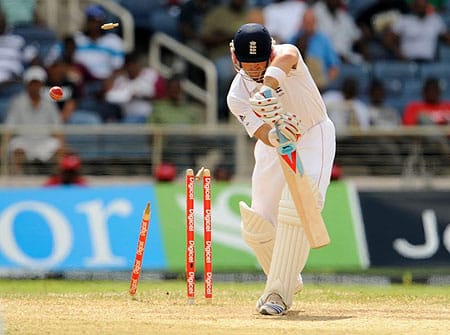

A cricket pitch is made with a combination of grass, dust and soil. The state of the pitch (dry or wet) can vary with the climatic conditions. Depending on the firmness and texture of the pitch, the way a batter receives the ball is different for different conditions of the pitch.
Cricket pitches in areas with less rainfall and more warm weather are usually dry. The dryness makes the pitch firm and hard. This means that the ball will come on to the bat very easily and batters can easily assess the length of the incoming delivery.

A dry pitch without cracks is a flat pitch. Such pitches rarely assist the bowlers and a high scoring match can be expected. However, a pitch with cracks might have something for the bowlers too. If the ball bounces off the cracks, the deviation of the ball may cause problems for the batter.
A test match lasts five days. Cracks on a pitch are often seen on the fourth and fifth days. These cracks open up if the pitch is not rolled regularly during the match. Moreover, the pitch becomes softer if it is not rolled. Spinners thus benefit a lot by bowling on these tracks. Such pitches are more commonly found in India, Sri Lanka and Bangladesh.
Dry pitches help in putting up a display between spinners and the batters. Skilled batters who prefer to play against spin bowling can rake up a lot of runs by bowling on these tracks.





